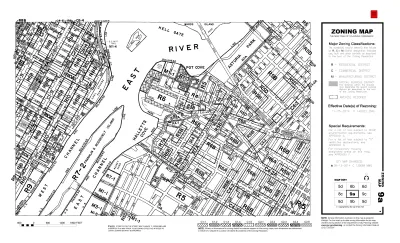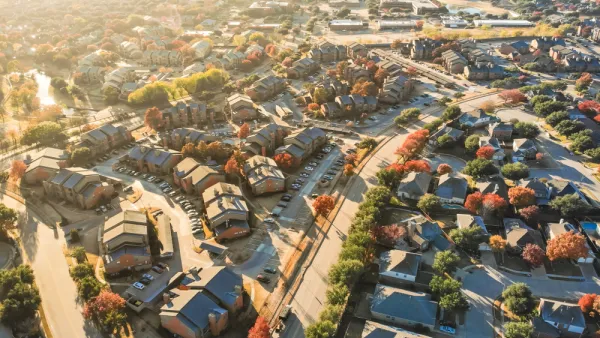An editorial in the New York Times argues that exclusionary zoning reinforces segregation and must be curbed.

Richard D. Kahlenberg sees segregation written into the zoning laws of American cities and towns. Even though racial segregation laws have been struck down by the Supreme Court, exclusionary zoning endures, and that zoning, Kahlenberg argues, is fueling segregation.
"The Supreme Court’s comparative willingness to tolerate explicit economic discrimination is mirrored in American public policy," Kahlenberg argues. These laws and policies have ensured that, while racial segregation has decreased, class segregation has increased. "Exclusionary zoning frustrates the Fair Housing Act’s aim by erecting barriers that exclude millions of low-income African-Americans and Latinos from wealthier white communities," Kahlenberg writes.
Kahlenberg sees a solution in a curb on the extent of zoning, either with an outright ban or a punitive action. "If we can’t achieve a ban, we should assess a penalty on municipalities that engage in discriminatory zoning, either by withholding infrastructure funds or limiting the tax deduction that homeowners in those towns can take for mortgage interest," he writes.
FULL STORY: The Walls We Won’t Tear Down

National Parks Layoffs Will Cause Communities to Lose Billions
Thousands of essential park workers were laid off this week, just before the busy spring break season.

Retro-silient?: America’s First “Eco-burb,” The Woodlands Turns 50
A master-planned community north of Houston offers lessons on green infrastructure and resilient design, but falls short of its founder’s lofty affordability and walkability goals.

Delivering for America Plan Will Downgrade Mail Service in at Least 49.5 Percent of Zip Codes
Republican and Democrat lawmakers criticize the plan for its disproportionate negative impact on rural communities.

Test News Post 1
This is a summary

Test News Headline 46
Test for the image on the front page.

Balancing Bombs and Butterflies: How the National Guard Protects a Rare Species
The National Guard at Fort Indiantown Gap uses GIS technology and land management strategies to balance military training with conservation efforts, ensuring the survival of the rare eastern regal fritillary butterfly.
Urban Design for Planners 1: Software Tools
This six-course series explores essential urban design concepts using open source software and equips planners with the tools they need to participate fully in the urban design process.
Planning for Universal Design
Learn the tools for implementing Universal Design in planning regulations.
EMC Planning Group, Inc.
Planetizen
Planetizen
Mpact (formerly Rail~Volution)
Great Falls Development Authority, Inc.
HUDs Office of Policy Development and Research
NYU Wagner Graduate School of Public Service





























